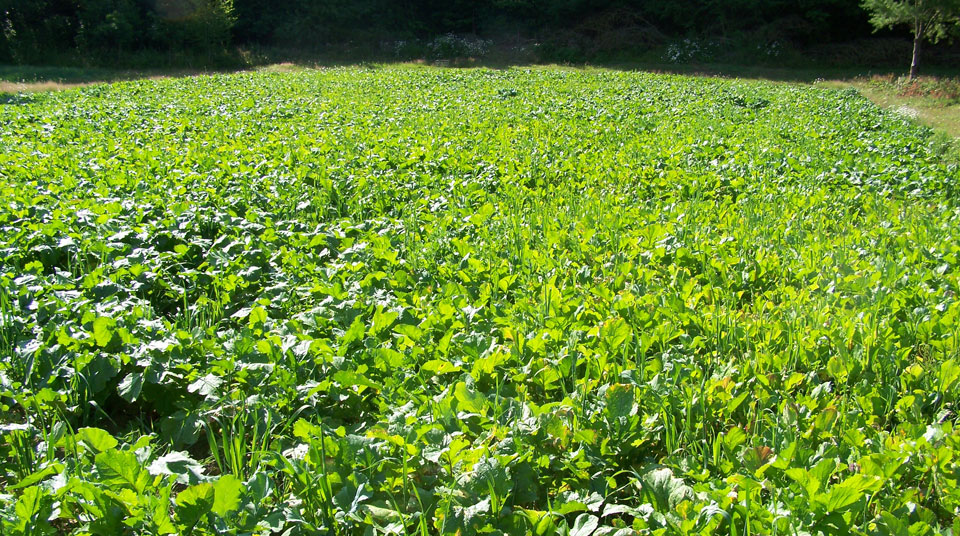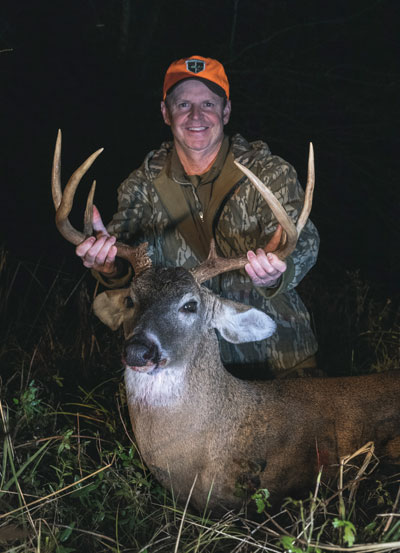provided by John Phillips
Bobby Cole is vice president of Mossy Oak BioLogic and GameKeepers. He’s a hunter and can tell you everything you need to know about Mossy Oak BioLogic plantings and how to better manage your lands for wildlife.

What do we need to plant first for bow season?
With Mossy Oak’s concept of GameKeepers, we try to have good groceries for deer to eat all year long. When providing food for deer, you never want the plate clean. You always want to offer a smorgasbord of good food that’s highly nutritious and have that available to deer all year long. For this reason, we believe that you need to have annual plants that are planted in the spring and fall, and perennial plants, like clover and BioLogic’s Non-typical Clover. If you live in the South, you’ll plant those clovers in the fall, like September or October, but if you live in the North, you’ll want to plant them the previous spring. So, timing your plantings and planting your green fields at the right time is very important for perennials.
In June, we’re in-between the end of spring plantings and the beginning of fall plantings for much of the nation, but this month isn’t a bad time to start planting. I suggest, too, that you decide what kind of planting you plan to plant for the fall and buy the seed and fertilizer now. Especially in the South, July and August are when most hunters and landowners start planting their fall crops for deer and turkeys. The seeds you’re looking for may not be as available then as they are right now.

Todd Amenrud, who’s editor-in-chief of our “GameKeepers Magazine” and lives in Minnesota, often will start planting his fall crops in July, so the food will be available to deer in September and October. He mostly plants his fall food crops in mid-July, as do many deer hunters in that northern tier of states like Minnesota, Wisconsin, New York and Pennsylvania. If annual plantings like Green Patch Plus, Maximum, Deer-Radish, Last Bite, and Final Forage are planted and have a rain on them within 8-10 days after planting, deer may begin browsing on them within 2 weeks after planting. These plantings explode out of the ground, so hunters can start hunting over those plantings within a month - if deer seasons are open. Hunters definitely can scout those green fields within a month and define the trails the deer are taking to and leaving their food to move to their bedding areas.
Because these are annual plants, they’ll only survive 8 or 9 months. These seeds will put all their energy into producing forage during that time. Annuals grow a lot of food for deer and turkeys in a short time. If I’m a hunter in Missouri or Iowa, I want to plant these plants in mid-August. In the Deep South, hunters may not plant any of these seeds until August or early September. Labor Day is when most southern deer hunters try to get their green-field plantings in the ground. However, if a good rain falls in August, you may want to go ahead and plant just ahead of that rain to get a jump start on green-field planting. September historically has been the driest month of the year. Watching the Weather Channel and knowing when the rain is arriving will get your green-field plantings out of the ground to produce food for deer and turkeys.
So, if you have all your seed bought, soil test done and lime and fertilizer ready, then when you do see that rain coming, you’re ready to plant. That’s why we’re talking about green-field plantings in June - to help you get ahead of the rush for seed and fertilizer and know when to plant for early bow season.
If these plants can get 30-45 days of growth on them before the first frost, you can have an unbelievable food plot with tons and tons of forage for deer and turkeys that lasts all the way through the winter. Just as critical as having the right type of food-plot plantings and planting that food at the right time of the year is the third important ingredient - the weather. You have to become a weather watcher. The very best time to plant these crops is the day before a rain or during a rain. Rain kicks your food plot off and helps the seeds to germinate. Also, don’t forget to fertilize your green-field crops when you plant. Then the seeds will get maximum nutrition to take up in their roots and transfer that nutrition to their leaves and bulbs.
To learn more about improving your land for wildlife, planting green fields and knowing when to plant what where, go to www.plantbiologic.com, and/or call 662-495-9292. To order “GameKeepers Magazine,” go to GameKeepers Club, and you can join us as a GameKeeper and get our magazine.






























